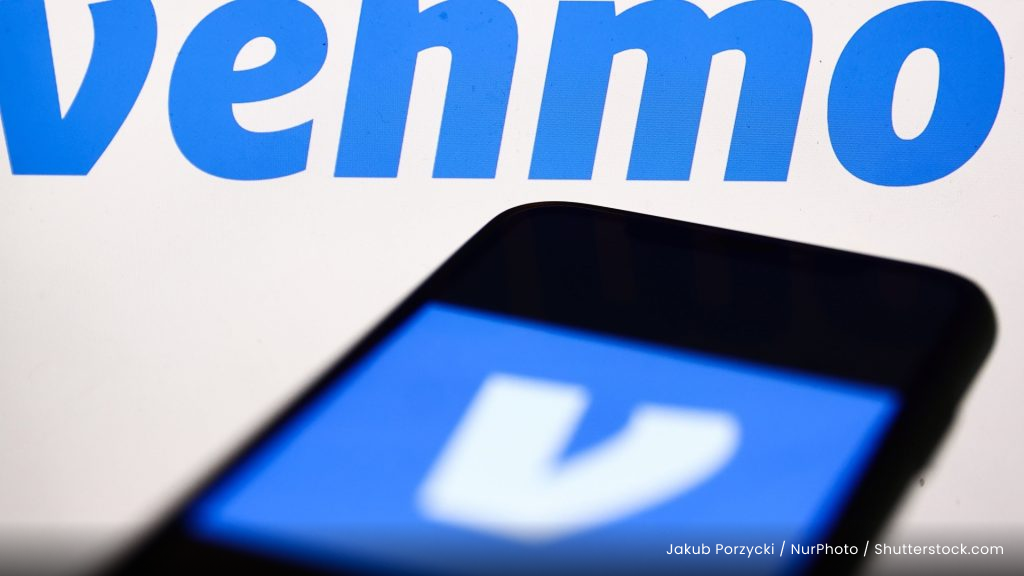Can You Use a Credit Card on Venmo? Understanding Fees and Security Measures

Venmo is a mobile payment app that can be used to send or receive payments. You can pay friends and family, make purchases, and donate to charities. Users can send the following payment types:
- Peer-to-peer: Send payments to friends or family, similar to writing a check or paying them in cash.
- Business transactions: Make purchases using Venmo. Users can request refunds if the item they purchased isn’t what was promised on these transactions.

400+ Credit Cards
Analyzed independently across 50+ data points in 30+ product categories

Reviewed
By a team of credit card experts with an average of 9+ years of experience

Trusted by
More than one million monthly readers seeking unbiased credit card guidance
CardCritics™ editorial team is dedicated to providing unbiased credit card reviews, advice and comprehensive comparisons. Our team of credit card experts uses rigorous data-driven methodologies to evaluate every card feature, fee structure and rewards program. In most instances, our experts are longtime members or holders of the very programs and cards they review, so they have firsthand experience maximizing them. We maintain complete editorial independence — our ratings and recommendations are never influenced by advertiser relationships or affiliate partnerships. You can learn more about our editorial standards, transparent review process and how we make money to understand how we help you make informed financial decisions.
Can You Use a Credit Card on Venmo?
Yes, you can use credit cards to send funds and make payments on Venmo.
While Venmo is a payment processing app, it is not a banking app. You must connect your Venmo account to a bank account, prepaid card, debit card or credit card.
How to Link a Credit Card to Venmo
You can add a new credit card to Venmo in just a few steps:
- Find your account settings in the top right corner of the app.
- Click “Payment Methods, and then click “Add bank or card.”
- Add your credit card details.
Why You Might Want to Use a Credit Card on Venmo
There are several reasons why users may want to use credit cards on Venmo:
- Credit card reward points: Many credit cards offer reward points, such as 1% back on all purchases including those made through Venmo.
- Convenience: Some users find credit card payments on Venmo convenient, especially if they’re used to making most payments with credit cards.
- Financial flexibility: Unlike debit cards or account transfers, credit cards allow you to send funds and pay off the balance later.
- Security concerns: Some users are uncomfortable linking their bank account to a mobile payment app, and prefer to use a credit card for an extra layer of protection.
- Building credit: Users may be utilizing credit cards to build credit or better manage financial flexibility throughout the month.
Fees Associated with Using a Credit Card on Venmo
Some credit cards have fees when used to make payments on Venmo. These fees may include credit card service fees or cash advance service fees, the latter of which may carry a higher APR on your card.
In some cases, carriers may charge fees only for one type of transaction. For example, the card provider might charge a 3% fee when the user sends money to friends, but doesn’t charge any fees for purchases.
Since each card provider is unique, you should check your added cards for potential fees. You can do these by taking these steps.
- Go to the “Me” tab.
- Go to the “Wallet” section.
- Tap on the card under “Banks and cards.”
- View potential fees that will be listed under the card.
Alternatives to Using a Credit Card on Venmo
As we mentioned above, there are multiple alternatives to using a credit card on Venmo, which each have their own pros and cons.
Bank Accounts
Sending money directly from a bank account with sufficient funds does not incur fees, which can provide significant cost savings if you’re using Venmo regularly or on costly purchases. Some users, however, are uncomfortable with the idea of connecting Venmo directly to their account and prefer to use credit cards.
Debit Cards
Debit cards don’t result in fees, and they can also be used to transfer money to and from your Venmo account. Users who prefer credit cards do so for the same reasons as a bank account, feeling like credit cards may be more secure or enjoying the financial flexibility of being able to pay off a purchase later.
Venmo also supports other payment options, including:
- Venmo balance: You can fund your Venmo account balance by transferring funds from your bank or prepaid cards. When other users send payments, it appears in your account balance and can be used to make payments.
- Prepaid cards: Prepaid cards can be used to fund payments on Venmo.
- PayPal: You can use a PayPal account to fund payments or transfer balances on Venmo.
Security Considerations When Using a Credit Card on Venmo
Venmo uses the following security protocols to help protect your credit card information:
- Encryption of account details.
- Multi-factor account authentication for identity confirmation.
- Optional PIN code set ups.
- Regular account and fraud monitoring to identify potentially fraudulent transactions.
Venmo is PCI-compliant, and has comparable security protocols to other mobile payment platforms. PayPal, for example, offers similar security features with encryption, multi-factor authentication, and proactive fraud monitoring.
It is important to note that Venmo accounts can be at risk for data breaches, account hacks, or scams.
To help safeguard your information, make sure that you take advantage of all security options. You should also avoid Venmo scams, such as sending money back to users who claim they’ve “accidentally” sent a payment to you.
What to Do If Your Credit Card Doesn’t Work on Venmo
If you’re struggling to connect your credit card to Venmo, it’s important to contact your card provider for potential issues. Venmo says the most common issue is a recent change in accounts.
If your card issuer says there are no issues with your card and they’re not declining payments from processing, you can contact Venmo support. You can access troubleshooting resources or contact support directly here.
Alternatives to Venmo for Credit Card Payments
There are several quick-pay mobile apps that enable users to make convenient payments to peers or businesses.
Examples include:
- PayPal: May have lower fees compared to Venmo and offers more advanced reporting and functionality (especially for business accounts), but Venmo is more user-friendly.
- Zelle: May have lower fees compared to Venmo, and is comparable for usability and functionality.
- Cash App: Charges slightly more for instant transfer fees than Venmo, but otherwise the two platforms are similar in security, usability, and functionality. Both charge credit card fees for some providers.
Frequently Asked Questions
Can I use a credit card on Venmo for business transactions?
Yes, you can use credit cards to make business transactions through Venmo, though credit card fees may apply.
What is the limit on credit card transactions on Venmo?
If you haven’t yet completed Venmo’s identity verification process, there’s a weekly spending limit of $299.99. If you have completed the identity verification process, you can send up to $60,000 per week on Venmo and spend $7,000.
Does Venmo charge a fee for transferring funds to a credit card?
You can’t transfer funds to a credit card, but you can transfer funds to eligible Visa and Mastercard debit cards.
How to change the payment method to a credit card on Venmo?
You can store multiple payment methods in your Venmo account.
You can add a new credit card under your account at any time by following these steps:
- Find your account settings.
- Click “Payment Methods.”
- Click “Add bank or card.”
- Add your credit card details.
When making a payment, you can change your payment method using these steps:
- Click on the payment method shown.
- Select a different saved payment method.
- If needed, add a new credit card.
Why is my credit card not being accepted on Venmo?
You may have trouble connecting your credit or debit card to Venmo if there was a recent change in your zip code or address. Venmo recommends reaching out to your card issuer to assess potential issues that may prevent you from successfully connecting the accounts.












